Submarines type "Stalin". The best Soviet submarines of the Great Patriotic
In 1932, a group of Soviet submariners arrived in The Hague, their goal was to visit the design bureau IVS. This design bureau was located in Holland, but belonged to the well-known German machine-building concern “Deshimag” and was almost fully staffed with highly skilled German specialists who had extensive experience in designing and building submarines during the First World War. The main purpose of the creation of this company was to preserve valuable cadres for Germany at that time when it was forbidden for the country to create its own submarine forces under the terms of the Versailles Treaty. By the time the Soviet delegation visited the enterprise, the design bureau had already managed to declare itself successful submarine projects for Finland, Japan and Spain. The boat project for Spain "E1" interested the Soviet side, and tests carried out with the presence of the Soviet delegation in Cartagena confirmed the characteristics of the boat and made a good impression.
In April, 1933 was signed an agreement on the design of a new submarine for the USSR on the basis of the Spanish E1, but under Soviet armament and mechanisms. The development received the designation "Е2" and was conducted in Bremen with the participation of several Soviet specialists. In January, 1934, the draft of the new boat was presented to the leadership of the People's Commissariat of Heavy Industry and the command of the Soviet Navy. The technical design of the future submarine was approved and adopted for laying the ground for the Soviet fleet in a large series. The project was given number IX and the letter “H” (German), later replaced by “C” (the average, which was gradually transformed into Stalinets, according to the accepted fashion, to call military equipment samples in honor of the leaders of the country and the party). Working drawings of the boat, which were endorsed by Deshimag employees, were completed at the beginning of 1935.
The construction of the first three boats of the IX series was carried out at the Baltic Shipyard, these boats were equipped with imported equipment and mechanisms. During the construction and operation of the first two boats, shortcomings were identified: a shortage of 0,5 nodes of the design surface speed, periscope vibration at full speed, frequent tearing of diesel engine pistons and other remarks. It also became obvious that it was impossible to build a large series of ships based on the installation of foreign equipment, since it was impossible to guarantee its timely delivery. So, on the C-3 IX series submarine, diesel engines of the German company MAN and other technical equipment were received with a delay of almost two years. In this regard, a clear and absolutely right decision was made to rework the project of the IX series submarine, eliminating the identified shortcomings and replacing the foreign equipment with the Soviet one.
That is how the project of the IX-bis series was born. It was she who became the most popular, 38 ships were completed, the construction and entry into the fleet which was delayed for many years due to the outbreak of war. The greatest changes in the project have undergone a diesel power plant. Especially for the boat under the direction of N. M. Urvantsev, a new four-stroke eight-cylinder irreversible diesel engine 1D was developed at the Kolomna Plant, the diesel power remained the same 2000 hp (at 470 revolutions per minute), the Esok speed characteristics remained unchanged. At the same time, the installation of new engines required an increase in the diameter of the exhaust pipes from 360 to 420 mm and reworking of the oil, water, air, and fuel systems. In addition to this change, the construction of the logging was also affected: the shields, which covered the 100-mm gun, interfered with the work of artillery crews, so it was decided to abandon them. At the same time on three boats of the IX series the fence was also dismantled. The carried out changes of the project were successful, as they allowed to keep the main tactical and technical characteristics of the boat, having solved a number of important problems.
In terms of architecture, the submarines of the IX and IX-bis series were one-and-a-half submarines of mixed design, in which the robust hull was riveted and the lightweight - welded. In the process of mass production of boats, the volume of welded structures increased. Starting with the C-21 boat, the manufacture of a solid ship hull was also carried out using this technology. The design of the durable hull of the boat is distinguished by a high level of manufacturability, primarily due to the rejection of the separation of joints and grooves and work to simplify the shape of the conical and cylindrical sections. The strong wheelhouse of the boat had an oval shape, due to which its width and water resistance decreased when moving underwater. A permeable (that is, filled with seawater) superstructure rose above the durable hull of the boat.
The boat was divided into seven compartments, three of which were shelter compartments, they were separated by special spherical watertight bulkheads, which were designed for pressure in 10 atmospheres. A similar layout of the hull in the Soviet fleet was used for the first time. From the bow to the stern of the boat, the compartments were distributed as follows: first shelter compartment: torpedo, living quarters for privates; second compartment: battery, 62 elements of the bow group of batteries, the living quarters of officers and the cabin of the boat commander; the third shelter compartment: the central post, above the compartment was the conning tower, as well as the fence of the withdrawable devices; fourth compartment: battery, 62 elements of the aft group of batteries, living quarters for foremen; fifth compartment: diesel; sixth compartment: electromotor; Seventh asylum compartment: torpedo, living quarters for rank and file.
According to the staff, the C-type submarine crew consisted of 45 people: 8 officers, 16 foremen and 21 private. Later in the war years on some submarines, the crew size increased by another 1-2 man. This was due to the need for additional operators of acoustic and radio equipment.
The power plant of diesel-electric submarines of the Stalinets type consisted of two diesel engines of the surface course of the type 1D produced by the Kolomna plant, which developed the power of the 2000 hp. each and two electric motors of type PG-72 / 35 with power 550 hp at 275 rpm. In addition, there was an 124 battery cell on board, divided into two groups. On the IX series boats there were German diesel engines MAN M6V 49 / 48 of the same capacity and rechargeable batteries from 124 elements like 38-МАК-760, which were produced by the German company AFA.
The boats had quite powerful torpedo-gun armament. Each submarine had six 533-mm torpedo tubes (four bow and two fodder), the stock of torpedoes was 12, with all six spare torpedoes in the nose torpedo compartment. The artillery armament of the boats was quite powerful and consisted of X-NUMX-mm B-100PL guns, located on the deck in front of the retractable fence and 24-mm semi-automatic 45-K gun, located on the deckhouse, and there were two 21-mm bullets . During the war years, on some boats, instead of the 7,62-mm cannon, an 45-mm large-caliber anti-aircraft gun was mounted.
Compared with the "Pike" boat type "Stalin" was a qualitative leap forward. They fully answered the task, which was set by the Red Army Navy Directorate after the construction of the first series of Soviet submarines and was aimed at eliminating the backlog in submarine shipbuilding from the advanced countries of the world. The “C” type boats were distinguished by better habitability, which was provided by spacious compartments and a rational arrangement of equipment and mechanisms. The surface speed was considered simply enormous - about 19,5 units, which was achieved through the use of two powerful diesel engines with an 2000 horsepower.
The maneuverability characteristics of submarines of the type "C" were considered to be quite satisfactory for the entire period of their operation. Having developed a full stroke, in the surface position the boat made a turn of 180 degrees in about three minutes. The diameter of the circulation was at the same time 1,7 cable. In the mode of economic progress the same maneuver could be performed in four minutes. Under water, the boat made a turn of 180 degrees in nine minutes at 6-nodal speed and in 12 minutes at 3-nodal speed. The diameter of the circulation at the same time was 5 and 5,6 cable respectively. The transition time from the cruising position to the positional position was for boat type “C” 25 seconds, from positional to combat - 15-20 seconds, from cruising position to combat - 48-50 seconds.
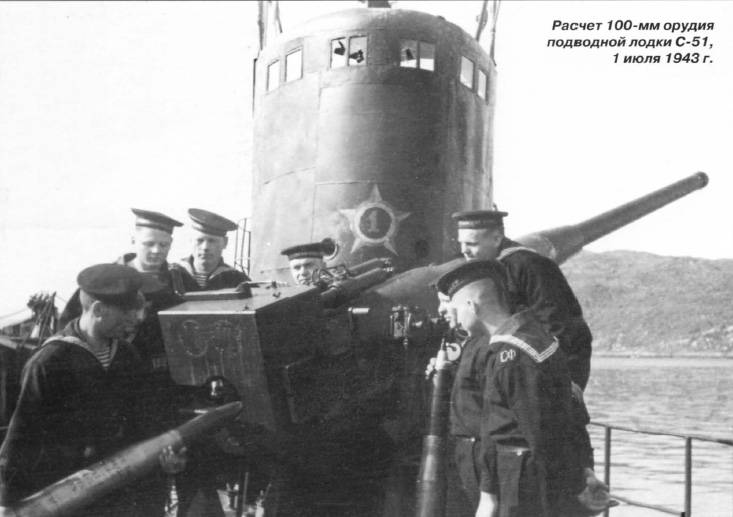
Boats planned to build in three series. The first three boats of the IX series were built in 1934-1938. Then the 41 submarine of the IX-bis series was laid, of which 38 boats were completed, their construction was carried out from 1936 to 1948 year. Construction of boats under the project IX-bis was delayed due to the overall complexity of the project. The main problems were associated with obtaining the necessary diesel engines, which is why a batch of X-bis series submarines of the Shchuka type was ordered to load the shipyards in the USSR. Still 18 submarines were built all-welded according to the modified project of the series XVI, but by the beginning of World War II they were all only in the early stages of construction, so none of the boats in this series was completed.
In total, the 41 type C boat was commissioned. Of these, the 17 fleet was incorporated into the 17 fleet in the beginning of the war, the 7 was completed in the war years, and the 22 boats afloat to 1941 on June 1 were completed after the end of the war action. The fate of the three first C-2, C-3 and C-2 boats belonging to the IX series was the most tragic. The C-1940 boat exploded a mine during the Soviet-Finnish war in January 1, and the two remaining boats were being repaired in Liepaja at the time of the start of World War II. The C-3 boat did not move and was blown up by the crew when leaving the city. Submarine C-5 underwent medium repair. The submarine could not dive and developed a speed of no more than 23 nodes, despite this she tried to break out of Liepaja on the night from 24 to June 1. At sea, it was discovered and sunk by German torpedo boats. At the same time she was on board the crew of the C-100 boat and a certain number of workers at the Tosmar shipyard, about 20 people in total. Of these, German torpedo boats lifted on board only the order of XNUMX survivors.
Thus, only C-type submarines of the IX-bis series took part directly in the combat actions and campaigns of the Great Patriotic War. During the war years, the “Stalinists” sunk 12 transports and enemy warships in the Northern Fleet and destroyed two more. The Eski of the Baltic Fleet destroyed nine enemy transport and warships and seriously damaged four more ships with torpedoes. Two more small vehicles were sunk by the artillery armament of the Baltic submarines. In the Black Sea, the results of the boats were much more modest: two landing ships and a self-propelled barge, another ship was sunk by artillery. Torpedoes were damaged amphibious and anti-submarine ships. During the war years, 13 Soviet C-type boats of the IX-bis series died: two in the North, 9 in the Baltic, and two in the Black Sea. Thus, the Baltic Fleet suffered the greatest losses, where only one boat survived the war, 90 percent of the ships of this type were lost, two out of four submarines were sunk on the Black Sea. The lowest losses were in the Northern Fleet, which lost two boats and less than 17% of the existing composition of these vessels.
During the years of the Great Patriotic War, “Eski” sank 27 of enemy ships and damaged 8. Total - 2,7 transport and warships for one boat lost in battles. This is one of the best results, which is close to the indicators that the submariners of the Kriegsmarine have achieved - 4,41 transport and warships to a submerged German submarine. It should be noted that the Soviet submariners operated in immeasurably more difficult conditions than the German ones, especially in the first half of the war, including the Baltic Sea, which for submarines with an underwater displacement of more than 1000 tons was still too small and in addition was stuffed with thousands of contact and non-contact min.
The powerful artillery weapons of the Stalinists allowed it to be used not only for sinking enemy ships, but also for firing on coastal targets. For example, in October 1941, the C-7 submarine carried out shelling of the Finnish railway stations, and on the black sea in October of the same year, the C-31 submarine was engaged in shelling the positions of the German infantry at Perekop. The transition from one theater of operations to another (from the Pacific Fleet to the Northern Fleet), which was perfect in 1943, demonstrated the excellent fitness of C-type boats for ocean cruises and offshore activities. During the stay of the Pacific Esok in Dutch Harbor, the American sailors were surprised by their high tactical and technical characteristics.
It should be noted that the famous Soviet submariners Grigory Shchedrin and Alexander Marinesko served on the Eskas. For one trip, the last one sank two large German transport in the Baltic at once. On January 30, his boat C-13 carried out the “attack of the century”, sending Wilhelm Gustloff transport with a displacement of more than 25 thousand tons, and Marinesko sank Transport of General Steuben with a displacement of about 10 thousand tons in February. According to the tonnage sunk, Alexander Marinesko became the most productive Soviet submariners during the war.
The submarines of the “C” type that survived the war served until the middle of the 1950, after which all the Eski were gradually written off. Some of them were sent for recycling (trimmed into metal), some were converted into floating training or charging stations, several boats from the Pacific Fleet were transferred to the Chinese Navy, where they had served 15 for years. The last from the composition of the fleet dropped out a training station, refitting from the boat "C-14", it was 9 February 1978 of the year.
The submarine C-51 has been partially preserved to this day; the cabin and part of the hull of this boat were installed as a monument in Gremikha. The only fully preserved submarine is the famous Red Banner Guards Boat "C-56", which is established as a monument and museum on the embankment of Vladivostok.
Tactical and technical characteristics of the submarine type "C" series IX-bis:
Displacement: surface - 840 tons, scuba - 1070 tons.
Overall dimensions: length - 77,75 m, width - 6,4 m, draft - 4 m.
The power plant - two diesel engines with horsepower 2х2000. and two main electric motors with power 2х550 hp
Travel speed: surface - node 19,5, submerged - node 8,5.
Economic speed: surface - 8,5-10 nodes, subsea - 3 node.
Cruising range (normal fuel capacity) - up to 8200 miles (surface run), to 140 miles (underwater run).
Immersion depth: working - 80 m, limit - 100 m.
Artillery weapons: 1x100-mm cannon B-24PL, 1x45-mm cannon 21-K and 2x7,62-mm machine gun.
Torpedo armament: 4х533-mm nasal torpedo tubes and 2x533-mm stern torpedo tubes, total torpedo stock - 12 pieces.
The autonomy of swimming is 30 days.
Crew - 45 man.
Information sources:
https://vpk-news.ru/articles/45346
http://deepstorm.ru
http://www.telenir.net/transport_i_aviacija/tehnika_i_vooruzhenie_2000_01/p7.php
Open source materials
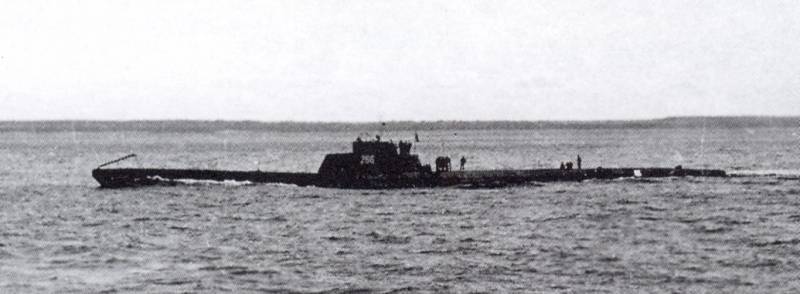
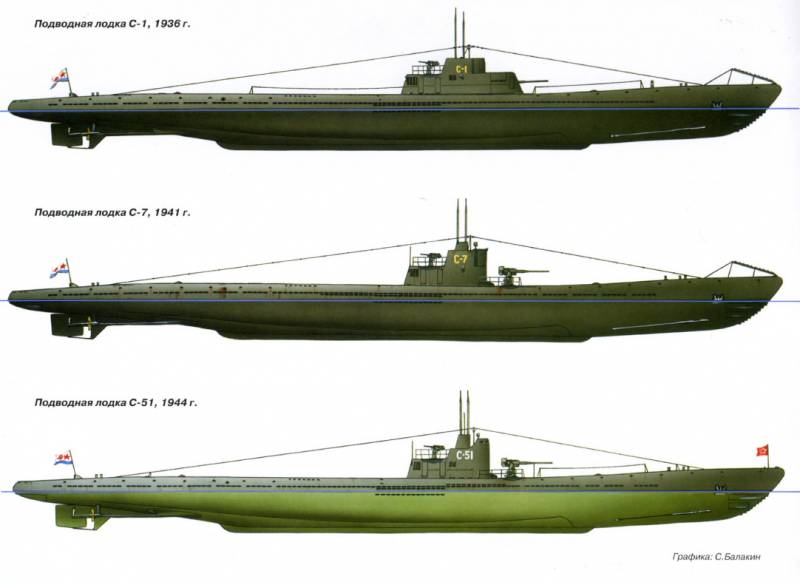
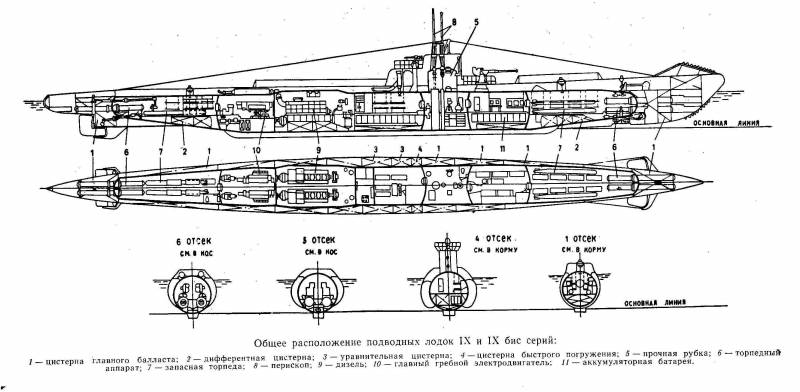
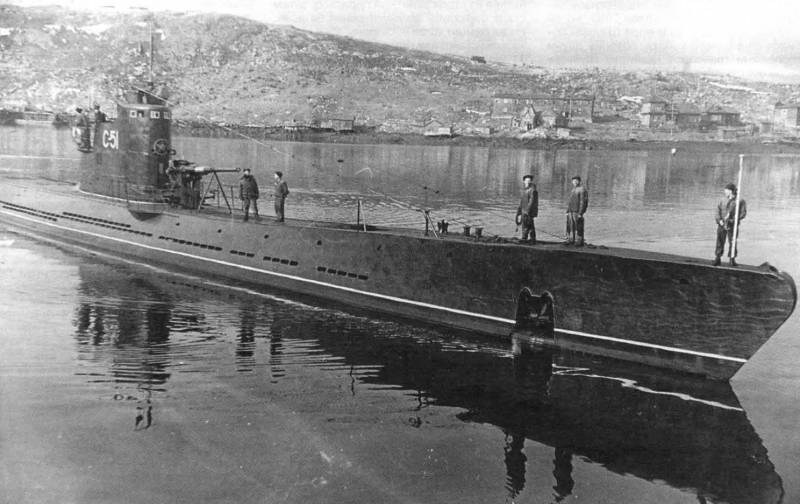
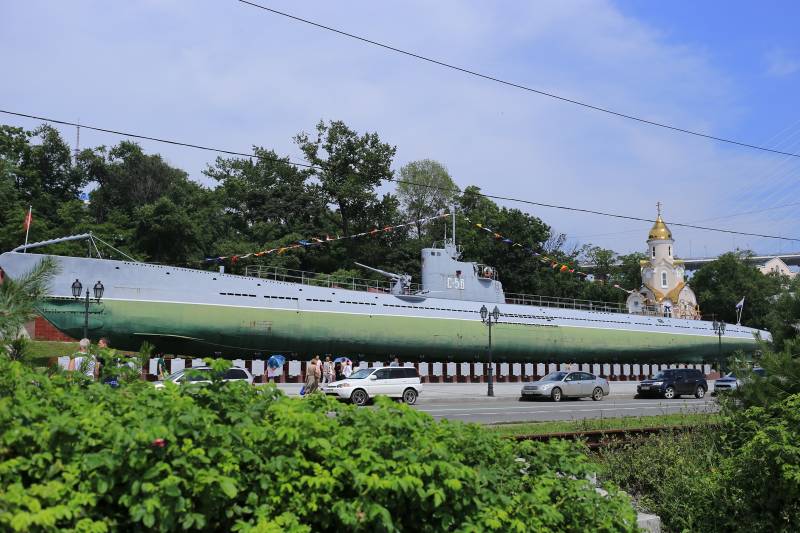
Information